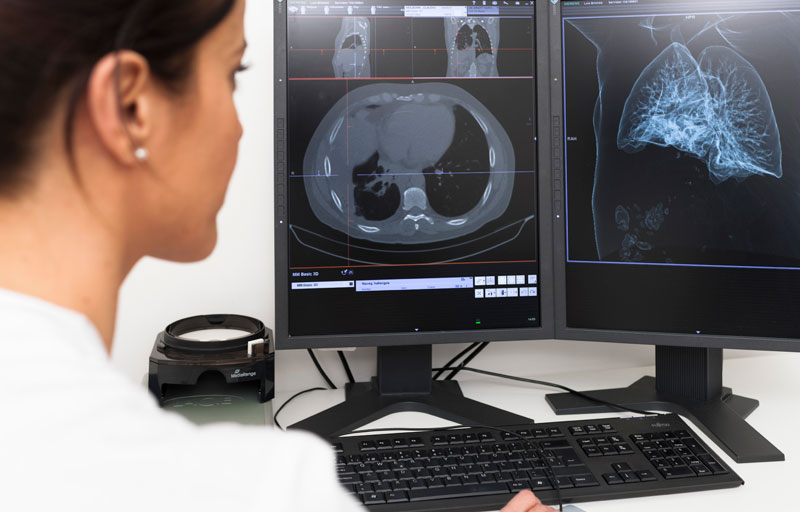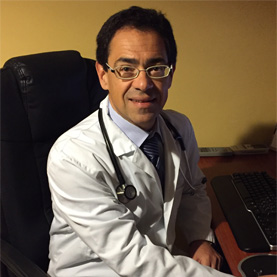- There are 2 million people in Spain with COPD, more than 70% of them undiagnosed.
- Tobacco is the main preventable risk factor in COPD.
- Between 40% and 55% of patients diagnosed with COPD continue to smoke.
- Smokers with signs of COPD such as cough, productive cough or shortness of breath should see a specialist for spirometry to check for COPD.
COPD is a chronic, progressive disease with no cure which causes 50 deaths a day in Spain. The main risk factor is tobacco, making it a preventable disease. Despite this, 23% of the Spanish population are smokers with the greatest percentage of smokers, 33%, aged between 25 and 50.
Smoking is also a trigger factor in COPD, it worsens COPD and causes acute exacerbation of symptoms leading to the need for inpatient treatment. However between 40% and 55% of patients diagnosed with COPD continue to smoke. “Stopping smoking is the best thing that can be done to protect the lungs and, if already suffering from COPD it is fundamental in preventing worsening COPD symptoms,” explains Dr José Joaquin Cebrián Gallardo, lung specialist at HC Marbella.
COPD manifests itself in two ways, tobacco playing a fundamental role in both. On the one hand it can cause emphysema where the lungs are destroyed little by little, the alveoli deteriorating reducing the quantity of oxygen reaching the cells and increasing shortness of breath. On the other hand it can lead to chronic bronchitis, tobacco smoke causing the lining of the bronchi to be constantly inflamed and irritated resulting in excessive secretion of mucous which obstructs the respiratory airways.
It is likely that your doctor has told you that your disease is called COPD but you may not be sure what this means. COPD is a SMOKING ASSOCIATED disease which is characterised by difficulty in air passing through the bronchi, often causing the following SYMPTOMS: shortness of breath when walking or on increased activity and a productive cough which has worsened over the years. You may have had DYSPNOEA (shortness of breath) or “gasping for air,” which deteriorates under certain circumstances (on exercising, with a cold or respiratory infection etc) for a long time. Sometimes COPD is also known as CHRONIC BRONCHITIS OR CHRONIC EMPHYSEMA.

How do we know you have COPD?
When you come for a consultation, you will be asked about tobacco use, dyspnoea (shortness of breath), cough (especially first thing in a morning) and details of any sputum produced. To confirm the diagnosis we will carry out forced spirometry (breathing tests).
Below we offer practical advice to HELP YOU FEEL BETTER...
SMOKING IS EXTREMELY DAMAGING TO YOUR HEALTH!
Stopping smoking is probably the best treatment there is. Stopping smoking is DIFFICULT but NOT IMPOSSIBLE. On occasions you will feel an irresistible urge to smoke, you may be irritable, anxious with a greater appetite. Try and keep calm, these symptoms should NEVER be an excuse to start smoking again. The BENEFITS of stopping SMOKING are immediate and can be demonstrated after only a few hours.
Flu is an infection which affects the respiratory tract, it is different to a cold and can be serious in people with COPD whose respiratory airways are more sensitive, with this in mind all smokers should have the flu vaccine.
Pneumonia (an infection which affects the lungs) can worsen COPD, therefore if you are over 65 it is important to have the pneumococcal vaccine every 5 years. These vaccines can both be given together. Your healthcare team will advise you about when to have them.
In the case of respiratory conditions it is not only important to take your medication as it is prescribed but also to understand “what it is for” and “how to take it”.
ASK YOUR CARE TEAM TO EXPLAIN ALL ABOUT YOUR INHALERS!
Being overweight or underweight is damaging to your health, maintenance of an optimum weight following a balanced diet is essential. A diet rich in fruit and vegetables is key, paying special attention to both the frequency of meals as well as the quantity of food.
THE BEST THING TO DRINK IS WATER, a daily intake of 1.5 litres is recommended, this also helps to thin any secretions.
To alleviate dyspnoea (shortness of breath) see our recommendations below, they will help to improve your quality of life. Breathing correctly is essential when performing all the exercises suggested below.
Controlled breathing.
Exercises whilst lying down.
We will start with some exercises which you must do lying down, this will help to relax you and slow and calm your breathing as much as possible. If you need to you can put several pillows under your head. Repeat these exercises as many times as you feel comfortable. Lying down, place the palms of your hands, completely relaxed, on your abdomen. Breathe in gently through your nose, at the same time inflating your abdomen (where your hands are resting), hold your breath for 1 or 2 seconds, with your lips pursed breathe out slowly and completely through your mouth.
Stay lying down. Now place your hands on your lowest ribs next to your waist. Breathe in gently through your nose to expand your ribcage (where your hands are resting). Hold your breath for 1 or 2 seconds, breathe out slowly through your mouth, with pursed lips, until there is no air left, you will see that your chest deflates.
Exercises whilst seated
The following exercises must be performed whilst sitting in a chair with your back straight and your legs slightly apart. Rest your hands across your thighs: Breathe in through your nose and at the same time lift your arms making them into a “V”. Breathe out through your mouth with your lips pursed, and slowly lower your arms until your hands are across your thighs again. Repeat the exercise several times.
Put your right hand on your right shoulder bending your elbow. Whilst breathing out through pursed lips, lower your body until your elbow reaches your left knee. On breathing in through your nose, lift your elbow upwards and backwards. Repeat this several times with your right arm. After a rest, do the same with your left arm.
IT IS ADVISABLE TO PERFORM THESE EXERCISES DAILY
Getting rid of secretions (bronchial hygiene)
Coughing cleans the respiratory airways. For coughing to be effective, you must breathe in deeply and try and cough up any sputum in one or two coughs.
Move about… don’t keep still
Dyspnoea, or shortness of breath, makes you want to stay sitting down rather than moving about. If you spend many hours sitting down, moving around becomes increasingly difficult. You need to walk, even if it is only in the hall in your home, every time you do this you will increase your exercise tolerance. Feeling “short of breath” with exercise is not dangerous.
WALK EVERY DAY!
Climb stairs
You can do it by doing it slowly and breathing correctly. Here are a few tips for you to follow:
At HC Marbella our Respiratory Medicine Unit provides assessment, diagnosis and treatment of respiratory problems and lung diseases, offering diagnostic and treatment services for those with lung problems, which includes thorough investigation.
 Dr. José Joaquín Cebrián Gallardo
Dr. José Joaquín Cebrián Gallardo
Specialist in Smoking and Respiratory Medicine at HC Marbella
May 4, 2016
Read other news
Tel.: +34 952 908 628
+34 609 148 799
952908898 Oncology
951829978 Diagnosis by imaging
951829947 Gynecology
952908897 Fertility
951829947 Physiotherapy